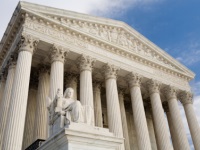
Last Monday, the United States Supreme Court denied cert in the highly publicized insider trading case of United States. v. Newman, 773 F.3d 438 (2d Cir. 2014). Without providing further commentary, the justices said they would not consider the Government’s challenge to the Second Circuit’s decision overturning the insider trading convictions of two hedge fund portfolio managers. The Supreme Court’s denial means that the Second Circuit’s decision limiting the scope of insider trading liability remains good law. It also signals the end of the Justice Department’s efforts to overturn a decision that the Government called a “roadmap for unscrupulous traders.”
Newman, a former portfolio manager at Diamond Capital Management, and Chiasson, co-founder of Level Global Investors, were convicted in 2012 and sentenced to four-and-a-half and six-and-a-half years in prison, respectively. According to the Government, lower-level financial analysts at Diamondback and Level Global received nonpublic earnings information from insiders at two public technology companies, and passed this information on to their portfolio managers (including Newman and Chiasson), who then executed trades on the basis of this information. As we previously reported, the Second Circuit reversed Newman’s and Chiasson’s convictions in 2014, finding that the Government must show that a trader knew that the insider disclosed information in exchange for personal benefit. The Court went on to hold that the personal benefit must be more concrete than the mere fact of friendship between the tipper and tipee, including “proof of a meaningfully closer relationship” that generates actual or potential pecuniary gain or something similarly valuable in nature. The Court held there was insufficient evidence for a jury to find that the corporate insiders received a benefit, much less that Newman and Chiasson knew of such a benefit, and overturned the convictions. The Court’s ruling was seen by many as a blow to the Justice Department’s Wall Street crackdown.
In its cert petition to the Supreme Court (which we first told you about here), the Government sought to overturn the Second Circuit’s definition of what amounts to a “personal benefit.” The government argued that the Second Circuit’s definition could not be reconciled with the Supreme Court’s 1983 decision in Dirks v. SEC, 463 U.S. 646 (1983), which “did not require an ‘exchange’ to find liability for a gift of inside information.” The Government also claimed that the “meaningfully close” requirement identified by Newman should be rejected because it found no support in Dirks. The Government argued in its petition that if the ruling were left in place, conduct long understood as prohibited would “elude criminal prosecution.” The Government also asserted that the Appellate Court’s decision would “hurt market participants, disadvantage scrupulous market analysts, and impair the government’s ability to protect the fairness and integrity of the securities markets.”
The Supreme Court’s cert denial undoubtedly leaves a gap in the tools currently available to the Government in prosecuting insider trading cases, and it will be interesting to see what federal prosecutors do in identifying ways around the higher standard for proving insider trading. Even if the Government were to now direct its efforts in defining the law of insider trading towards Congress (as Newman said it should in his brief: “…the government’s effort to advance its policy agenda would be better directed to Congress, which can and has considered legislation defining the elements of insider trading”), that would be far from an easy or quick fix. While three bills aimed at broadening the prohibition on insider trading were introduced in Congress following Newman (and while more may follow in the wake of the Supreme Court’s cert denial), it is doubtful that the current majority will actually pass a tougher Act, and it will likely take a change in the majority to get legislation passed that will fill the gaps left by Newman.
Uncertainties surrounding the law of insider trading therefore seem destined to remain, and are only heightened by the Supreme Court’s refusal to consider the issues set forth in Newman. In the recent decision of United States v. Salman, the Ninth Circuit held that the relationship between a tipper who shared confidential information with his brother qualified as the sort of “meaningfully close relationship” identified by the Second Circuit (No. 14-10204 (9th Cir. July 6, 2015)). Salman, a remote tippee, argued that the direct tippee’s familial relationship with his tipper-brother was insufficient to demonstrate that the tipper had received a benefit because, under Newman, the tipper had to have received “at least a potential gain of a pecuniary or similarly valuable nature.” The Salman court rejected that argument, holding that “[t]o the extent Newman [could] be read to go so far,” the Ninth Circuit would decline to follow it. Some, including the Government in its cert petition, argued that Salman is in conflict with Newman because the Court “did not apply the additional requirements that the Second Circuit…layered on top of Dirk’s personal benefit test.” The Government also argued that the Seventh Circuit’s decision in SEC v. Maio (51 F.3d 623 (7th Cir. 1995)) was inconsistent with Newman because the Seventh Circuit “rejected the argument that the insider’s ‘disclosure was not improper because he did not receive any direct or indirect personal benefit as a result of his tip.’” If the inconsistences in approach between circuit courts continue or expand, it is possible that the Supreme Court will choose to consider the issue in the future. However, in the meantime, the Supreme Court’s denial of cert leaves unresolved an uncertain landscape surrounding the law of insider trading, and the specific parameters and implications of the Newman ruling will likely continue to be debated in the coming years.

